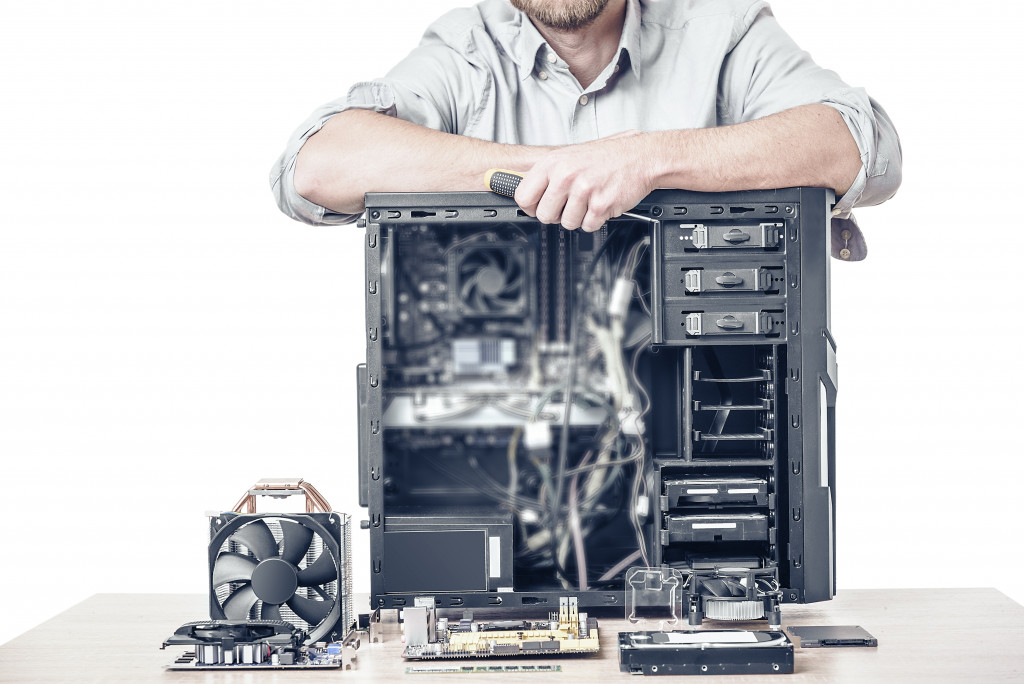Office equipment is a vital part of businesses and employees today. It has become an essential tool in helping to increase efficiency and productivity in the workplace, making it easier for business owners and their staff to stay organized and on top of tasks. Not only does this help to get more done in less time, but it also allows companies to save money and resources by reducing waste and increasing operational efficiency.
When looking at office equipment’s impact on businesses, it is clear that numerous benefits are associated with using such tools in the workplace. For example, having a reliable network infrastructure makes communication between team members much faster and more efficient, enabling them to collaborate more effectively and leading to improved project management outcomes. Furthermore, modern office equipment such as computers, printers, photocopiers, and scanners allow for quick information sharing from one individual or department to another with minimal effort or delay, which can contribute significantly towards streamlining day-to-day operations.
Not only do businesses benefit from having adequate office equipment though, employees too can reap the rewards of regular use of technology across all areas of their job roles. Research shows that employees equipped with the latest tech tend to be happier and have higher levels of engagement due to feeling valued by their employer. Additionally, these individuals often experience higher levels of job satisfaction when they don’t have to worry about outdated tools or manual processes slowing them down, leading to increased morale across teams and better productivity.
However, office equipment will require regular maintenance and upkeep to continue delivering these benefits. Here are a few you should consider.
Preventive Maintenance Inspection
Preventive maintenance is crucial to keeping any office equipment operating in top condition. It involves regular inspections, testing, and equipment servicing to identify and address potential problems before they arise. This can help extend the equipment’s life and keep it running at peak performance.
Generally speaking, preventive maintenance should be carried out on a planned schedule, with specific intervals for each type of equipment. Typically, these intervals are determined based on manufacturer guidelines or other industry standards. Additionally, specific procedures may need to be performed more frequently depending on the type of equipment being serviced. For example, desktop computers and laptops may need to have their internal components inspected every few months. At the same time, printers may require more frequent attention as they are often used more heavily.
Preventive maintenance also includes regularly replacing or upgrading aging parts or components, which could lead to faulty operation or breakdowns. This is especially important with servers and other large-scale systems, which require careful monitoring and timely replacement of components such as hard drives and memory chips. Additionally, preventive maintenance inspection should include checking for dust build-up inside electronic devices, as this can create overheating that could cause significant damage over time.
Usage Level Monitoring
Another important aspect of office equipment maintenance is monitoring usage levels. This will enable companies to track and analyze how frequently the devices are being used and identify any abnormalities or spikes in activity that could indicate a problem with the device.
Monitoring usage levels can also help determine whether additional resources are required to handle the increased demand on particular machines or if adjustments need to be made to ensure operations run smoothly. For example, suppose one printer sees heavy use during certain times of day while other printers remain idle. In that case, it may make sense to move some of the workloads from one busy machine to another so both can work more efficiently.
Finally, usage level monitoring can help businesses better understand their technology needs by providing insight into how well the equipment is performing and whether additional devices are needed. This can help avoid situations where machines get overloaded or under-utilized, leading to more effective resource planning.
Spare Part Investments

Spare parts are essential components of any office equipment maintenance system. These include anything that can be replaced or upgraded, such as circuit boards, memory chips, power supplies, and hard drives. A sufficient supply of spare parts is critical for ensuring that machines remain operational and functioning at peak performance.
It’s also essential to invest in higher-quality spare parts when possible. Though they may cost more upfront, these components tend to last longer and provide better performance than budget alternatives. Additionally, investing in high-end spares can help reduce the number of repairs needed over time due to their increased reliability.
Custom threaded metal fasteners in bulk might be a cost-effective investment if the office equipment includes chairs, desks, and other furniture requiring frequent assembly or disassembly. Companies may want to opt for fasteners so you can use them multiple times without becoming damaged.
Final Thoughts
Overall, setting up a maintenance system for office equipment is essential for ensuring that machines remain in peak condition and running efficiently. This involves developing preventive maintenance plans, monitoring usage, and investing in spare parts. By taking these steps, companies can ensure that their technology remains reliable and up to date so employees can focus on tasks rather than dealing with malfunctioning machines.

